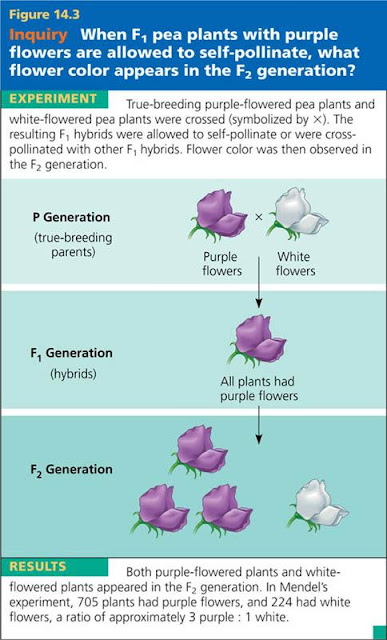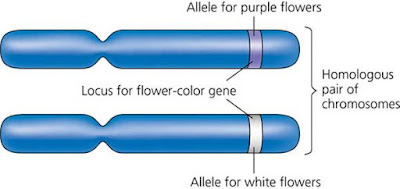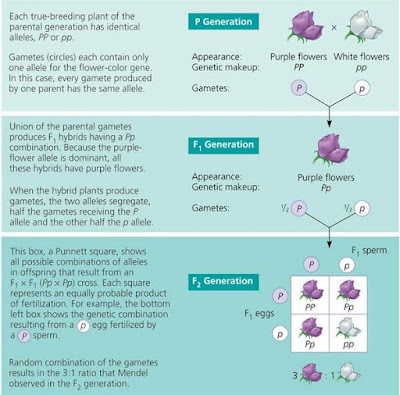If you've ever had muscle spasms or muscle cramps, you know they can be extremely painful. In some cases, a muscle may spasm so forcefully that it results in a bruise on the skin. Most muscle spasms and cramps are involuntary contractions of a muscle. A serious muscle spasm doesn't release on its own and requires manual stretching to help relax and lengthen the shortened muscle. Spasms and cramps can be mild or extremely painful. While they can happen to any skeletal muscle, they are most common in the legs and feet and muscles that cross two joints (the calf muscle, for example). Cramps can involve part of a muscle or all the muscles in a group. The most commonly affected muscle groups are:
Back of lower leg / calf (gastrocnemius).
Back of thigh (hamstrings).
Front of thigh (quadriceps).
Muscle cramps range in intensity from a slight twitch or tic to severe pain. A cramped muscle can feel rock-hard and last a few seconds to several minutes or longer. It is not uncommon for cramps to ease up and then return several times before they go away entirely.
The exact cause of muscle cramps is still unknown, but the theories most commonly cited include:
Other factors that have been associated with muscle cramps include exercising in extreme heat. The belief is that muscle cramps are more common during exercise in the heat because sweat contains fluids as well as electrolyte (salt, potassium, magnesium and calcium). When these nutrients fall to certain levels, the incidence of muscle spasms increases. Because athletes are more likely to get cramps in the preseason, near the end of (or the night after) intense or prolonged exercise, some feel that a lack of conditioning results in cramps
Cramps usually go away on their own without treatment, but these tips appears to help speed the healing process:
Stop the activity that caused the cramp.
Gently stretch and massage the cramping muscle.
Hold the joint in a stretched position until the cramp stops.
Until we learn the exact cause of muscle cramps, it will be difficult to say with any confidence how to prevent them. However, these tips are most recommended by experts and athletes alike:
Stretch the calf muscle: In a standing lunge with both feet pointed forward, straighten the rear leg.
Stretch the hamstring muscle: Sit with one leg folded in and the other straight out, foot upright and toes and ankle relaxed. Lean forward slightly, touch foot of straightened leg. (Repeat with opposite leg.)
Stretch the quadriceps muscle: While standing, hold top of foot with opposite hand and gently pull heel toward buttocks. (Repeat with opposite leg.)
Most muscle cramps are not serious. If your muscle cramps are severe, frequent, constant or of concern, see your doctor.
Artherosclerosis
Hardening of arteries
Tunica intima thickens with deposits of Cholesterol, Fibrous (scar) tissue, Dead muscle cells, Blood platelets
Arteries become less elastic and partially narrowed
↑BP which in turn accelerates atherosclerosis
Leads to endothelium damage and weak walls
Mechanism
Excess cholesterol leaks from lipoproteins (LDLs)
Deposited on arterial walls
Macrophages (white blood cells) are trapped within cholesterol
Release free radicals which damage the arterial wall
Activates blood platelets which stick to damaged areas releasing clotting factors (thromboxanes)
Forms a plaque which may rupture to produce a thrombus
Circulating thrombus is called an embolus
Embolus may lodge elsewhere in the circulation (brain, heart arteries)
NB: healthy arteries produce anti-clotting factors (prostaglandins) → don't form clots
Factors that aggravate atheroma formation / atherosclerosis:
Hypertension (↑BP)
Smoking (release of free radicals)
High LDL and low HDL
NB: they all cause endothelial damage
Aneurysm
Weak arterial walls may burst leading to severe loss of blood (haemorrhaging)
Brain aneurysm is called a stroke
Deep Vein Thrombosis
Clots are formed by
Endothelial damage (see atherosclerosis)
Altered blood components (dehydration, too many platelets)
Altered blood flow (stasis of veins) → this is what causes DVT
Prolonged immobility
Such as paralysis, long-distance flights, lying down for weeks after surgery
Thrombus often originates in calf veins
Inflammation of vein walls → destroys vein valves
Causes leg pain, swelling, and redness
Elastic support stockings required for life
Prevented by taking aspirin or warfarin which inhibit blood clotting
Coronary Heart Disease
Atherosclerosis causes arteries to become narrowed
More force required to move blood through narrowed vessels
Blood pressure increases
Stable angina
↑exercise leads to ↑oxygen requirements by heart
Narrowed arteries prevent more blood to pass through
Shortage of blood to heart muscle causes chest pain
Cells do not die as some blood can still pass through
Pain only occurs during activity but not at rest
Myocardial infarction (MI)
Coronary artery is totally blocked by a thrombus/embolus
No blood supply to heart muscle and cells die
Irreversible if not treated within 90min
Heart failure
Prolonged blockage of artery causes damage to heart muscle
↓contractions / ↓cardiac output / ↓pressure generated / less blood leaves heart
More blood is stored:
on the right side of the heart → enlarged heart
in veins → swollen legs and enlarged liver
Lifestyle
Cholesterol
Needed for
Vitamin D production in skin
Sex hormone production in gonads and adrenal glands
Making cell membranes
Produce bile acid (salts)
Has properties similar to fats → soft, waxy, and insoluble (difficult to remove if deposits form)
Transported in blood from liver to tissues
Safe transport is needed due to its insolubility
Achieved by lipoproteins, which are soluble fatty proteins
These are wrapped around cholesterol
Normally, only small amounts of free cholesterol escape
LDL
Low density lipoproteins
Carries cholesterol from liver to tissues
Normally, some cholesterol 'leaks' from the lipoprotein and is absorbed to build cell membranes
Excess LDL/cholesterol → too much cholesterol leaks out and causes atherosclerosis
HDL
High density lipoprotein
Picks up cholesterol from arterial walls and carries it away from tissues
Travels to liver where cholesterol is removed with bile
Smoking
↓antitoxidants (vitamins), more damage due to release of free radicals by phagocytes
Nicotine constricts arteries causing platelets to stick together → vasoconstriction → heart must work harder to force blood through → increases BP
↑BP causes damage to blood vessel lining / endothelium / collagen
Leads to rise on blood platelets and makes them more sticky / form a plug / adhere to collagen fibres
Release of thromboplastin/thrombokinase
Fibrinogen converted to insoluble fibrin
Platelet plug trapped by fibrin mesh
Raises conc. of fibrinogen (in blood) → increased risk of clotting
↑LDL causes more cholesterol to leak out in blood
Carbon monoxide reduces the efficiency of the blood in terms of carrying oxygen
Haemoglobin combines with CO more readily than with oxygen → forms carboxyheamoglobin
Associated with plaque formation
Principle CHD = heart muscle receives inadequate amount of blood or oxygen/(coronary) blood supply reduced
Treatment
Medication
Beta blockers reduce heart rate and reduce oxygen required by heart
Aspirin prevents blood clotting and thrombosis formation
ACE inhibitors stabilize plaques → prevent thrombus to break off
Statins reduce LDL and increase HDL
Angioplasty
Deflated balloon-like device is passed up to the heart via the aorta
Guided into damaged coronary artery and inflated to stretch the artery
Heart by-pass graft
Leg veins and arteries from chest are used to by-pass the blocked region of the coronary artery
Involves open heart surgery
Reperfusion therapy after a myocardial infarction
Angioplasty done within 90 minutes of onset of chest pain
May prevent irreversible damage to the heart muscle
Prevention
1. Screen population for
High BP
High cholesterol
Uncontrolled diabetes
Smoking? Unhealthy diet? No exercises?
Men over 55 and women over 65 are at highest risk
2. Monitor the behaviour of the heart during exercise
Difficult but encouraging the population to adopt a more healthy lifestyle from an early age is important
Often leads to changes in diet and weight management
3. Giving up smoking and reducing alcohol intake
Reduces blood pressure
Coronary heart disease is a long-term degenerative disease, starts at birth
Jaundice
![[011.jpg]](https://blogger.googleusercontent.com/img/b/R29vZ2xl/AVvXsEji6FCBo-ForXob3uZlJlr1-790-migOCqMpGvHUM890sMe5JqQBsv42NbBu6eP-J2RYzwqOFcelVKJOoGhgItzlBPp9tlzAnJSZhm5oxBn1LdYKla8rse_HcT0_U574eEiLVFEJfgoTa1N/s1600/011.jpg)
Jaundice refers to the yellow colour of the skin and whites of the eyes caused by excess bilirubin in the blood. Bilirubin is produced by the normal breakdown of red blood cells.
Normally, bilirubin passes through the liver and is excreted as bile through the intestines. Jaundice occurs when bilirubin builds up faster than a newborn's liver can break it down and pass it from the body. Reasons for this include:
Newborns make more bilirubin than adults do since they have more turnover of red blood cells.
A newborn baby's still-developing liver may not yet be able to remove adequate bilirubin from the blood.
Too large an amount of bilirubin is reabsorbed from the intestines before the baby gets rid of it in the stool.
High levels of bilirubin — usually above 25 mg — can cause deafness, cerebral palsy, or other forms of brain damage in some babies. In less common cases, jaundice may indicate the presence of another condition, such as an infection or a thyroid problem. The American Academy of Pediatrics (AAP) recommends that all infants should be examined for jaundice within a few days of birth.
Types of Jaundice
The most common types of jaundice are:
Physiological (normal) jaundice: occurring in most newborns, this mild jaundice is due to the immaturity of the baby's liver, which leads to a slow processing of bilirubin. It generally appears at 2 to 4 days of age and disappears by 1 to 2 weeks of age.
Jaundice of prematurity: occurs frequently in premature babies since they are even less ready to excrete bilirubin effectively. Jaundice in premature babies needs to be treated at a lower bilirubin level than in full term babies in order to avoid complications.
Breastfeeding jaundice: jaundice can occur when a breastfeeding baby is not getting enough breast milk because of difficulty with breastfeeding or because the mother's milk isn’t in yet. This is not caused by a problem with the breast milk itself, but by the baby not getting enough to drink.
Breast milk jaundice: in 1% to 2% of breastfed babies, jaundice may be caused by substances produced in their mother's breast milk that can cause the bilirubin level to rise. These can prevent the excretion of bilirubin through the intestines. It starts after the first 3 to 5 days and slowly improves over 3 to 12 weeks.
Treatments
In mild or moderate levels of jaundice, by 1 to 2 weeks of age the baby will take care of the excess bilirubin on its own. For high levels of jaundice, phototherapy — treatment with a special light that helps rid the body of the bilirubin by altering it or making it easier for your baby's liver to get rid of it — may be used.
More frequent feedings of breast milk or supplementing with formula to help infants pass the bilirubin in their stools may also be recommended. In rare cases, a blood exchange may be required to give a baby fresh blood and remove the bilirubin.
If your baby develops jaundice that seems to be from breast milk, your doctor may ask you to temporarily stop breastfeeding. During this time, you can pump your breasts so you can keep producing breast milk and you can start nursing again once the condition has cleared.
If the amount of bilirubin is high, your baby may be readmitted to the hospital for treatment. Once the bilirubin level drops and the treatment is stopped, it is unlikely that treatment for jaundice will need to be restarted.
Blood group incompatibility (Rh or ABO problems): if a baby has a different blood type than the mother, the mother might produce antibodies that destroy the infant's red blood cells. This creates a sudden buildup of bilirubin in the baby's blood. Incompatibility jaundice can begin as early as the first day of life. Rh problems once caused the most severe form of jaundice, but now can be prevented with an injection of Rh immune globulin to the mother within 72 hours after delivery, which prevents her from forming antibodies that might endanger any subsequent babies.
Symptoms and Diagnosis
Jaundice usually appears around the second or third day of life. It begins at the head and progresses downward. A jaundiced baby's skin will usually appear yellow first on the face, followed by the chest and stomach, and finally, the legs. It can also cause the whites of an infant's eyes to appear yellow.
Since many babies are now released from the hospital at 1 or 2 days of life, it is best for the baby to be seen by a doctor within 1 to 2 days of leaving the hospital to check for jaundice. Parents should also keep an eye on their infants to detect jaundice.
If you notice your baby’s skin or eyes looking yellow you should contact your child's doctor to see if significant jaundice is present.
At the doctor's office, a small sample of your infant's blood can be tested to measure the bilirubin level. Some offices use a light meter to get an approximate measurement, and then if it is high, check a blood sample. The seriousness of the jaundice will vary based on how many hours old your child is and the presence of other medical conditions.











![[011.jpg]](https://blogger.googleusercontent.com/img/b/R29vZ2xl/AVvXsEji6FCBo-ForXob3uZlJlr1-790-migOCqMpGvHUM890sMe5JqQBsv42NbBu6eP-J2RYzwqOFcelVKJOoGhgItzlBPp9tlzAnJSZhm5oxBn1LdYKla8rse_HcT0_U574eEiLVFEJfgoTa1N/s1600/011.jpg)
